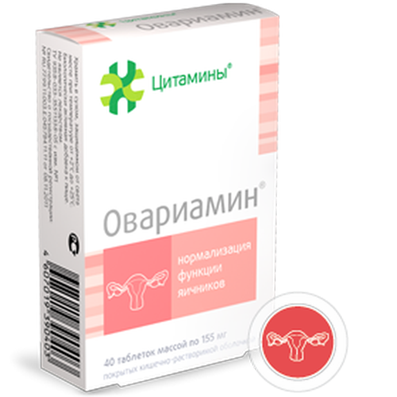Instruction for use: Pantogam
I want this, give me price
Pantogam (Hopantenic acid, GABA) - is a nootropic drug, a derivative from Calcium salt - the Hopantenic acid (GABA). Developed in Russia, where it is widely used to treat a variety of neurological, psychological and psychiatric conditions.
Hopantenic acid is a homologue of pantothenic acid. While pantothenic acid is the amide of D-pantoate and β-alanine, hopantenic acid is the amide ofD-pantoate and γ-aminobutyric acid (GABA). This change leads to an additional CH2in the molecule.
Brand name drug: Pantogam
International Nonproprietary Name: hopantenic acid (acidum hopantenicum)
Trade name: Pantogam
Dosage form indicating the names and quantification of active pharmaceutical ingredients and excipients: the tablet. 1 tablet contains the active ingredient - calcium gopantenat (Pantogam ®) 500 mg, excipients - methylcellulose 1.6 mg, 6.2 mg of calcium stearate, magnesium hydroxycarbonate 93.6 mg, 18.6 mg of talc.
Description: white pills, round and chamfered. Scored & can be broken in half (250mg or 500mg)
Pharmacotherapeutic group of drug: nootropic agent.
Pharmacodynamic: Pantogam range of actions related to the presence in its structure of gamma-aminobutyric acid. The mechanism of action is due to a direct effect on Pantogam GAMKB-receptor-channel complex. The drug has neuroprotective and anticonvulsant effects. Pantogam increases brain resistance to hypoxia and the effects of toxic substances, stimulates anabolic processes in neurons that combines moderate sedation with a mild stimulating effect, reduces the excitability of the motor activates the mental and physical performance. Enhances GABA metabolism in chronic alcohol intoxication and after ethanol withdrawal. Able to inhibit acetylation reaction involved in the mechanisms of inactivation, procaine (novocaine), and sulfonamides, thereby achieving prolongation of the action of the latter. Causes inhibition of pathologically elevated cystic reflex and detrusor tone.
Pharmacokinetics: Pantogam is rapidly absorbed from the gastrointestinal tract permeates through the blood-brain barrier, the largest concentrations are in the liver, kidneys, the stomach wall and into the skin. The drug is not metabolized and is excreted unchanged in 48 hours: 67.5% of the dose - the urine, 28.5% - in the feces.
Indications:
- Cognitive impairment in organic lesions of the brain (including the effects and neuroinfections traumatic brain injury) and neurotic disorders;
- Schizophrenia with organic cerebral insufficiency;
- Cerebrovascular disease caused by atherosclerotic changes of cerebral vessels;
- Extrapyramidal disorders (myoclonus, epilepsy, Huntington's chorea, hepatolenticular degeneration, Parkinson's disease, etc.), as well as for the treatment and prevention of extrapyramidal syndrome (hyperkinetic and akinetic) caused by taking antipsychotics;
- Epilepsy with mental retardation processes in the complex therapy with anticonvulsants;
- Psycho-emotional overload, decreased mental and physical activity, to improve concentration and memory;
- Neurogenic bladder disorders (pollakiuria, urgency, imperative urinary incontinence, enuresis);
- Children with perinatal encephalopathy, mental retardation of varying severity, developmental delay (mental, verbal, motor, or a combination thereof), with various forms of cerebral palsy, with hyperkinetic disorders ( syndrome, attention deficit hyperactivity disorder), neurosis-like states (stuttering, mostly clonic form; ticks.) The drug is used in children older than 3 years. In an earlier age is recommended to take the drug in the form of a syrup.
Contraindications: Hypersensitivity, acute severe kidney disease, pregnancy, lactation.
Dosage and administration: Inside 15-30 minutes after eating. Dose for adults is usually 0.25- 1 g for Children - 0.25-0.5 g daily dose for adults - 1.5-3 g for children - 0,75-3, the course of treatment - from 1 to 4 months, in some cases - up to 6 months. After 3-6 months, perhaps the re-treatment. With epilepsy in combination with anticonvulsants at a dose of 0.75 to 1 g per day. The treatment up to 1 year or more. When extrapyramidal neuroleptic syndrome in combination with a daily dose of study medication up to 3 g, treatment for several months. When extrapyramidal hyperkinesis in patients with inherited diseases of the nervous system in combination with the study medication from 0.5 to 3 g per day. The course of treatment for up to 4 months or more. Neuroinfections and when the consequences of traumatic brain injury of 0.25 g 3-4 times a day. Recovery efficiency at high loads and asthenic conditions Pantogam appoint 0.25 g 3 times a night. For the treatment of extrapyramidal syndrome caused by taking antipsychotics: Adults 0.5-1 g 3 times a day for children - 0.25-0.5 g 3-4 times a day. Course of treatment 1-3 months. When ticks: children under 0.25-0.5 g 3-6 times a day for 1-4 months. When urination disorder: Adults 0.5-1 g 2-3 times per day, for children 0.25-0.5 g (daily dose is 25-50 mg / kg). Treatment for 1 to 3 months. Children with various pathologies of the nervous system, depending on the age of the drug is recommended at a dose of 1-3 g Tactics drug use: building doses for 7-12 days, receiving a maximum dose for 15-40 days and the gradual reduction in dose Pantogam for 7-8 days. Break between translation methods Pantogam , as well as for any other nootropic agents, from 1 to 3 months. With long-term treatment is not recommended to co-administration of the drug with other nootropic and stimulants. Given the nootropic action of the drug is preferably carried out its welcome in the morning and afternoon hours.
Side effects: Allergic reactions (rhinitis, conjunctivitis, allergic skin reaction). In this case, cancel the drug. Very rarely observed adverse reactions from the CNS (hyperexcitation, insomnia or drowsiness, lethargy, confusion, headache, dizziness, ringing in the head). In this case, reduce the dose of the drug.
Overdose symptoms: Increased side effects (drowsiness or sleep disturbance, ringing in the head.) Treatment: activated charcoal, gastric lavage, symptomatic therapy.
Interactions with other drugs: prolongs the effects of barbiturates, increases the effects of anticonvulsants, prevents side effects of phenobarbital, carbamazepine, neuroleptics. Effect Pantogam enhanced in combination with glycine, etidronic acid. Potentiates the action of local anesthetics (procaine).
Storage: Store in a dry, dark place at a temperature not exceeding 25 ° C. Keep out of the reach of children.

 Cart
Cart





